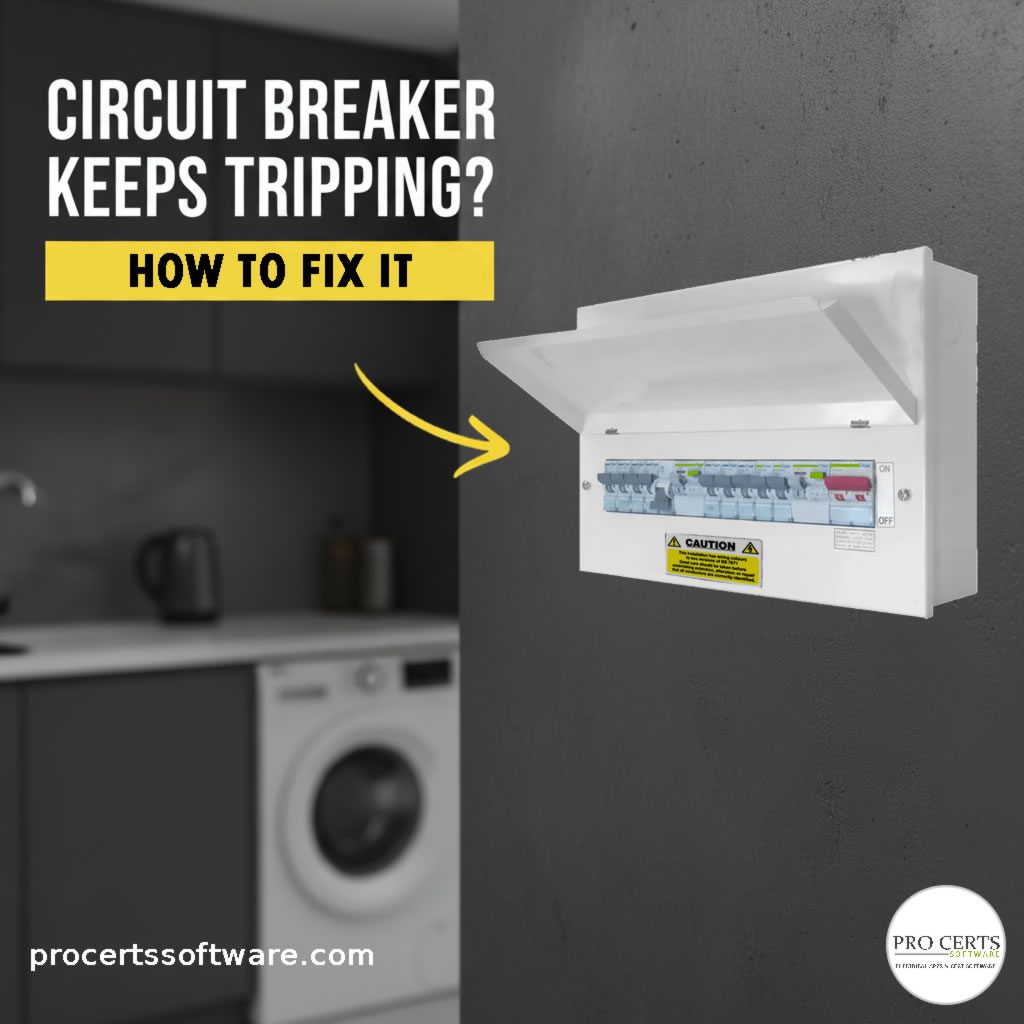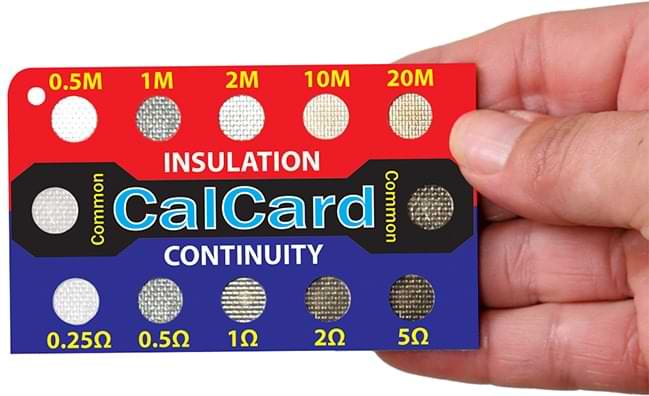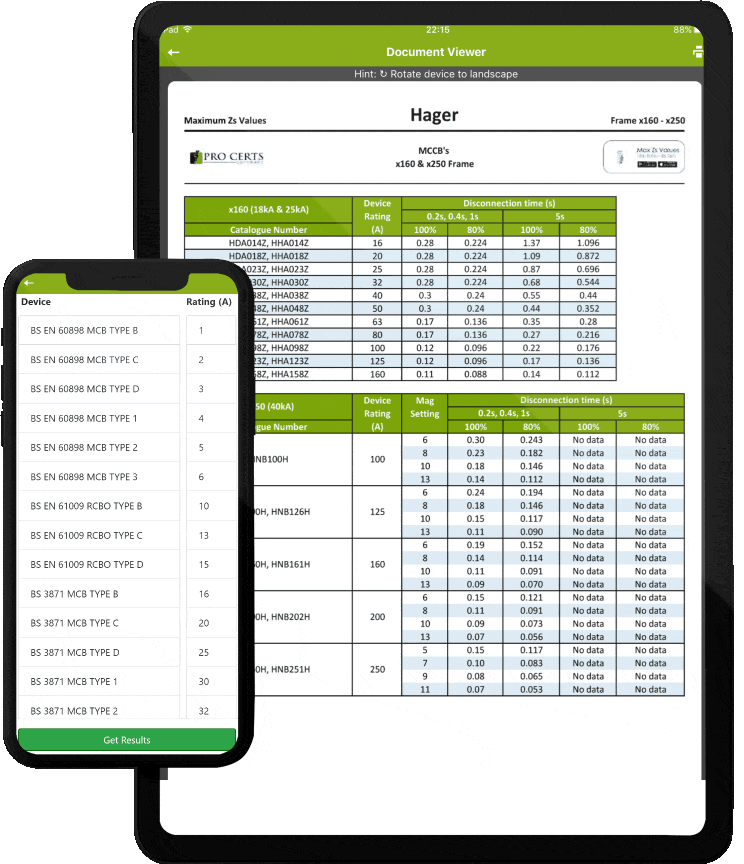Circuit Breaker Tripping? Causes & Fixes
Is your circuit breaker tripping repeatedly? Learn the top 3 causes, what to do immediately, and when to call a qualified electrician for safe, effective fixes.
Has your power suddenly cut out, leaving a room in darkness? Or perhaps an appliance you just plugged in caused a sudden “POP”? You’ve likely experienced a tripping circuit breaker.
⚠️ SAFETY WARNING: If a circuit breaker trips, contact an Electrician. This information is purely to help you understand the possible causes, solutions and fixes of tripping circuit breakers (CBs) – Do not attempt repairs or constant resets yourself. Electrical work is dangerous.
It’s a common household frustration, but more importantly, it’s a critical safety mechanism. Your circuit breaker’s job is to protect your home’s wiring from dangerous overloads and faults that could lead to fires. When it trips, it’s telling you something is wrong.
But what exactly is going wrong? And what should you do?
This comprehensive guide will walk you through the most common reasons why your circuit breaker keeps tripping and provide clear, safe steps to identify the problem – and when it’s time to call a professional electrician.
If your RCD is tripping then see rcd keeps tripping.
What is a Circuit Breaker?
A circuit breaker, fuse or MCB is a safety device which protects a circuit from overload (over-current protection) and short circuits (short-circuit protection) by switching off (tripped off) the power when it detects a fault.
|
Protection Mechanism |
What it Prevents |
|---|---|
|
Overload (Over-Current) |
Stops too many appliances from running on one circuit, preventing the wiring from overheating and igniting fires. |
|
Short Circuit |
Stops immediate danger and major current surges when live and neutral wires touch. |
Important Note on Supplementary Protection: MCB’s, Circuit Breakers and Fuses do not offer any neutral-earth fault or supplementary protection. An RCD (Residual Current Device) or RCBO (Residual Current Breaker with Over-current protection) is required for safety measures like 30mA protection for socket-outlets or cables buried in a wall.
Overloaded circuits cause fires, the fires are generally started with the wiring and/or electrical accessories overheating and igniting.
How to Safely Reset a Tripped Breaker
The process for safely resetting a circuit breaker depends on what the affected circuit serves (lights, sockets, or fixed appliances).
When a breaker trips, follow these steps before attempting a reset:
1) Safety First: Isolate the load.
- For Sockets: Unplug all appliances from the affected circuit, If you’re unsure which circuit it is, unplug everything from the room(s) that lost power. Don’t forget to turn off any spurs and isolators for that circuit if there are any.
- For Lights: Turn off all the light switches (and bathroom fans) in the rooms where the lights are not working.
- For Fixed Equipment: Turn off the local isolator for the equipment which has tripped, for example the shower, cooker or hob isolator.
2) Locate the Tripped Breaker: Go to your consumer unit. The tripped breaker will be in a different position from the others. Generally an MCB in the down position is normally off/tripped.
3) Reset: Firmly push the tripped breaker completely to the “OFF” position, then firmly push it back to the “ON” position.
If it immediately trips again, DO NOT FORCE IT. This is a strong indicator of a persistent, potentially dangerous fault. Leave it off and call a qualified electrician.
Never attempt to reset a circuit breaker more than once, there could be a serious fault. Constant resetting of a circuit breaker or MCB can cause irreversible damage to the wiring and connected electrical equipment, it can also damage the actual circuit breaker itself.
The Top 3 Reasons Your Circuit Breaker Keeps Tripping

Understanding why your breaker tripped is key to preventing it from happening again.
There are a number of reasons why your circuit breaker has tripped.
1. Circuit Overload
This happens when you demand more electricity from a circuit than it’s designed to provide. Think of it like trying to get too much water through a narrow pipe – it backs up!
To ensure your designs are safe and compliant, use our Online Electrical Software for instant Cable Size and Max Demand calculations.
- Symptoms: Often occurs when you plug in a new high-power appliance (kettle, hairdryer, vacuum cleaner, portable heater) or have too many devices running on one circuit.
- Why it happens: Old wiring, too many extension leads, or simply pushing a single circuit beyond its capacity.
- What to do:
- Unplug some devices from the circuit.
- Distribute high-power appliances across different circuits (if possible).
- Avoid using multiple heavy-duty appliances at the same time on one circuit.
2. Short Circuit (A Serious Problem)
A short circuit is more dangerous and occurs when a “live” wire accidentally touches a “neutral” wire. This creates a low-resistance path, causing a surge of current and rapid overheating.
- Symptoms: Often accompanied by a sudden “POP,” a flash, a burning smell, or sparking. The breaker usually trips immediately.
- Why it happens: Damaged appliance cords, faulty wiring within walls, loose connections in outlets or switches, or even a nail accidentally piercing a cable.
- What to do:
- Immediately unplug any recently used or suspected faulty appliance.
- If you see any smoke, sparks, or smell burning, switch off your main power supply at the consumer unit.
- Call a qualified electrician immediately. Do not attempt to use the affected circuit until it has been professionally inspected and repaired.
FOR ELECTRICIANS
Stop guessing load limits. Use the official Pro Certs Cable Size Calculator to instantly check maximum current capacity.
3. Earth Fault (Another Serious Safety Issue)
An earth fault happens when a “hot” (live) wire touches a grounded part of an appliance or the appliance’s metal casing. This causes current to flow to the earth, which is extremely dangerous and can lead to electric shocks. Modern consumer units have RCDs (Residual Current Devices) designed to detect these faults instantly.
For tripping RCD’s see rcd keeps tripping.
- Symptoms: Similar to a short circuit (sudden trip), but often triggered when an appliance becomes faulty, especially in damp environments (bathrooms, kitchens, outside).
- Why it happens: Damaged insulation, water ingress, or a fault within an appliance itself.
- What to do:
- Immediately unplug any recently used or suspected faulty appliance.
- If the RCD (often a larger switch protecting multiple breakers) has tripped, try to isolate the faulty circuit by turning off all individual circuit breakers under that RCD, then reset the RCD. Then turn breakers back on one by one to find the faulty one.
Warning: Circuit Breaker Ratings
⚠️Never replace a circuit breaker or fuse with one of a higher rating.
Never replace a circuit breaker or fuse with one of a higher rating. Cables are only designed to carry a certain amount of current (Amps). Exceeding this limit causes overheating and can start a fire.
The maximum amount of current a cable can safely withstand is determined by a combination of the cable size CSA, type of cable, installation method and the accessories and equipment maximum operating temperature.
If you exceed a cables maximum rated current carrying capacity the cable will overheat and fires can start.
The above is in no way advice or guidance, always seek expert advise from a qualified electrician.






